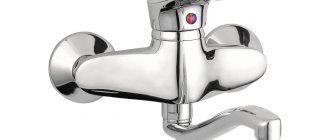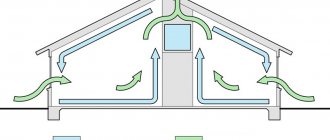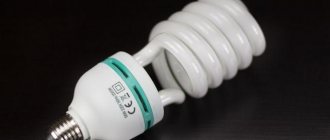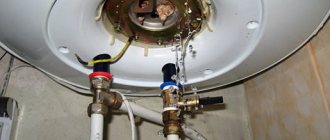Often, after flushing, a noise is heard in the toilet room from water entering the drain tank. If the water noise is quite strong, then most likely the hose is disconnected, which is installed specifically to dampen the sound effect.
Sometimes this rubber tube is simply forgotten to be connected when installing the tank. But there are often cases when it is in place, and unpleasant rattling sounds are heard while filling the tank. To fully understand why the toilet hums when water is filled into the tank, you need to know the general structure and operating principle of the drainage and water supply mechanisms.
Release mechanism with float
Valves of this type are divided by type and method of action:
- Push. These devices are divided, in turn, into categories:
The exhaust valve is single-mode . Such a device is equipped with one key, when pressed, all the liquid is drained from the tank.
Valve with "off" mode. In this mechanism, the initial impact leads to a small flow of liquid into the toilet, and the second one ends the water supply.
The exhaust valve is dual-mode. This device has two buttons on the lid of the tank, and when you press the first button, a certain portion of water comes out, and after pressing the second button, the container is completely emptied.
- Exhaust. With this device, the valve that closes the drain hole is raised by raising the rod.
- Lever. The exhaust system is activated by acting on a lever, which can be located either below or near the toilet.
Regardless of the method of influence and type of device, the operating principle of the components of the release mechanism is the same. It should be taken into account that the shut-off valve is connected to the float via a copper rod or plastic rocker arm.
As soon as the water is drained after use, the float lowers, and at the same time the draft moves the shut-off valve. Through the resulting hole, water quickly begins to flow into the tank. When the float rises completely, the valve, under the influence of traction, closes the hole, as a result of which the water supply to the drain tank stops.
The action plan depends on the cause of the problem
If the problem is in the gasket, you need to remove the shut-off valve and replace the rubber band. There is nothing difficult about this, but you need to choose a suitable replacement in diameter. You can also replace the entire fittings, but this is not justified.
If you don’t have a tube, pick one up at a hardware store that has the appropriate diameter—usually an internal diameter of 5-8 mm. As a last resort, you can attach a cord to the faucet, which will go down along the water discharge line. When water pressure hits the cord, it will descend to the bottom of the tank almost silently.
They deal with plaque by using anti-scale agents for washing machines, or simply pouring a bottle of table vinegar into the tank, adding a few tablespoons of soda and then filling it with water. After 2-3 hours, the water should be washed off - the noise will decrease. Repeat the procedure if necessary. Instead of vinegar and soda, you can use citric acid (50-60 g per tank). Plumbers recommend carrying out such cleaning for preventive purposes every 3-4 months.
If the toilet whistles when the tank fills, you need to clean the passages in the shut-off valve. You'll almost certainly get any rust flakes or other stuck-on solids out of them. To prevent the problem from recurring, install coarse and fine filters at the entrance of the water pipe to the apartment.
As practice shows, doing all these actions helps to cope with the noise of a filling toilet. Do this and it will stop irritating or causing you discomfort.
Video: Is the cistern noisy? Let's eliminate the noise!
Drain mechanism or shut-off valve
Such a device is necessary to supply liquid from the flush container to the toilet.
It consists of main parts:
- Release device (button or lever);
- drain siphon.
Most often, a rubber bulb acts as a siphon, which looks like an inverted plunger. This pear-shaped cone-shaped valve reliably shuts off the water in the lower part of the container.
The principle of operation of the drain mechanism is quite simple. When a button or lever is pressed, the lever system comes into action, the bulb rises through the rod and the water is drained into the toilet. At the same time, the shut-off valve opens and water begins to fill.
Vibration of pipes due to poor fastening
It is not uncommon for work to repair plumbing equipment or replace wiring in a toilet or bathroom to be carried out without much quality. As a result of mistakes made and poorly performed repair work, a hum may appear, for example, when pipes are improperly fastened.
As you know, pipes of different materials and different diameters, in accordance with the standards, must be fastened at a certain distance. This allows you to prevent not only mechanical damage to the pipes, but also the occurrence of rattling that occurs during turbulent movement of water under pressure.
Sometimes it is enough to secure the pipes well to the walls at a certain distance to eliminate the unpleasant hum.
Why are water pipes humming and what should I do? Plumber tips!
Quite often, after flushing, a terribly unpleasant noise begins to be heard in the toilet, the toilet tank is humming, as if a waterfall or something like that has formed there.
The culprit is a faulty drain tank. Fortunately, this problem is minor and can be easily fixed. But before we talk about fixing this problem, let’s turn to the “filling” of the drain tank.
So that you understand what you are dealing with and can easily solve other problems, such as constantly running water into the toilet or stopping the tank from filling.
Other interesting questions and answers
Conchita Gagarina1
1. Give an enema no more than 200 ml. 2. Be patient for 5-10 minutes 3. Empty your bowels Repeat one more time and give an enema with a chamomile solution, 100 ml somewhere. Just be sure to lubricate the tip with Vaseline or lubricant, otherwise your butt may hurt later and there will be no time for sex. And the main thing is not to overdo it, if you feel that even 100 ml is too much for you, then stop. This may seem disgusting to some, but it will help avoid any unpleasant moments.
There is nothing disgusting about this, and those who say that there is no need to do an enema anymore are, apparently, terribly lucky. I was unlucky once and I don’t even want to remember. Plus, the important thing before anal sex is not to be nervous and relax as much as possible.
John Done17
What is the cause of noise in the toilet when water is filled?
What is the reason for the squeaking or whistling sound in the tank when draining?
Why does water hum when it fills the toilet tank?
himerka2
I want to add one more method to what was written in the first answers. Which can and should be used in combination with “attaching” a rubber tube.
You need to install a water pressure regulator (reducer). Either for the whole apartment or for the toilet.
If you in your family do not need to quickly fill the tank, then this regulator should be set to the lowest pressure, for example, 0.5.....1 atm.
hallux5
When heated strongly it expands, it is more or less clear why this happens. But why does it also expand when it turns into a solid state (ice)? Guest6
An interesting feature of water is that when heated from 0 to 4 (3.98 - exactly) °C, water contracts. Thanks to this, fish can live: when the temperature drops below 4 °C, colder water, as it is less dense, remains on the surface and freezes, and a positive temperature remains under the ice.
Water has other features: high temperature and specific heat of fusion and boiling (compared to hydrogen compounds with similar molecular weight); high heat capacity and low viscosity of liquid water; Water, unlike other substances, expands when it freezes. Water is practically incompressible.
All these features are due to hydrogen bonds. Since in a water molecule 2 hydrogen atoms give one electron to an oxygen atom, the oxygen atom receives a negative charge, and the hydrogen atoms receive a positive charge. Due to this, each oxygen atom is attracted to the hydrogen atoms of other molecules and vice versa.
Each water molecule can participate in a maximum of four hydrogen bonds: 2 hydrogen atoms each in one, and an oxygen atom in two. When ice melts, some of the bonds break, which allows water molecules to be packed more tightly; when water is heated, bonds continue to break and its density increases, but at temperatures above 4 °C this effect is weaker than normal thermal expansion; During evaporation, all remaining bonds are broken.
Guest1
We suggest you familiarize yourself with the installation of a shower in a wooden house
The quality of modern faucets depends on the manufacturer and the materials from which they are made. As a rule, there are cheap models with a short service life. They say about these “put it in and throw it away”; an unsuccessful purchase begins to hum and leak after three months. But even high-quality and expensive faucets develop malfunctions over time.
Often, when installing a faucet axle box, in case of insufficient or excessive tightening of the threaded connection, the tightness of the rubber seal is broken and a leak occurs. To fix this problem, you can dismantle the part and replace the rubber band.
You can also wrap several layers of special elastic tape around the thread before screwing it into the body. It is inexpensive and sold at any plumbing store. However, this problem is not the reason that the system is humming.
What is a geyser
This device is shaped like a box. It is created from metal. It comes with a supply of two pipes. One supplies gas, the second – water. The key components of the design are:
- Radiator. This is where the water follows.
- Burners: main and pilot. They heat the water in step 1
When the mixer is opened, the valve opens and the burner is saturated with gas. It ignites, and the gas heats the heat exchanger (HE). To remove combustion products, a chimney and ventilation system are provided.
The operating principles of the equipment are such that during operation a slight noise is always heard in it. If there is insufficient ventilation in the room, the sounds become louder.
When starting hot water or while heating water, the device may whistle. Vibration may be felt when drawing water. This is a sign of water moving through the pipes. If the equipment begins to whistle and make more noise, To reduce noise levels.
The principle of operation of the gas water heater
The column or flow heater, as it is called, is a metal box (casing). Two pipes are connected to it for supplying water and gas. The main design elements are:
- Radiator (water flows through it).
- Main and pilot burners (serve to heat the liquid in the radiator).
When the user opens the faucet, the valve opens and allows gas to flow into the burner. It lights up and the gas heats the heat exchanger. Combustion products are removed through the chimney and ventilation.
Vibration of water tap gasket
An unpleasant sound may occur when opening the tap if the gasket is not tightly installed, blocking the flow of water. At the same time, water, moving at high speed, flows around a poorly fixed gasket, contributing to the appearance of a characteristic buzzing sound, sometimes passing through a knock, reminiscent of the operation of a hammer drill.
In this case, the noise is eliminated by replacing the gasket or valve housing with a new one.
To replace the gasket, turn off the water at the entrance to the apartment, carefully unscrew the faucet axle, and look at the condition of the gasket. If it is worn out and requires replacement, carefully replace it with a new one.
You can carry out such repairs yourself, without resorting to the services of a plumber.
You can watch a video on how to replace the rubber gasket on the crane box below:
Causes of noise when drawing water and how to eliminate them
When there is a large pressure of liquid in the drain tank, extraneous sounds, buzzing, whistling, etc. are often heard. To understand why the tank makes noise when filling with liquid, you need to know the reasons why these sound effects arose.
However, they are different and the following sources can be distinguished from them:
- No hose. When draining, the stream of water hits the walls of the tank and, in fact, the liquid itself in the container is an obstacle. At the same time, a characteristic noise is heard. To eliminate it, a hose is installed on the drain pipe of the shut-off valve. Moreover, the length of the rubber tube must be selected so that it reaches the bottom of the tank: this will noticeably reduce the noise when liquid enters.
- Shut-off valve vibration. This phenomenon can occur when the gasket on the piston itself inside the valve is worn out. Consequently, such a rod has a reduced size and, under the pressure of the liquid, it either blocks the outlet hole or opens it. As a result of the uneven supply of liquid, such a rattling sound is created. In such cases, you just need to change the seal or the entire shut-off valve, and the problem will be solved.
- Excess salts in water. As a result of the high content of limestone, salts, nitrates and other harmful impurities, a layer of these particles may form on the walls of the fittings inside the tank. As a result, when drawing water, an unpleasant sound is sometimes formed, similar to a whistling tank. To eliminate it, you need to completely clean the components from salt deposits.
- Lots of pressure. Sometimes, with high water pressure, a noise effect is created not only when water is supplied from the side, but also when it enters from the bottom. Here, to eliminate noise, you can try to reduce the liquid pressure using a ball valve.
If valve regulation does not help, then as an option, you can install a reduction gear to change the water flow.
Many people are familiar with such an unpleasant situation as loud noise, hum and whistling of the toilet when filling the water. If you have a new plumbing fixture and something like this has never been seen before, you might have seen something similar somewhere else.
In fact, the situation is very common. Most people do not attach importance to this and simply get used to extraneous noise, but we will tell you why the toilet squeaks when water fills, and how to fix it yourself?
The sound of a toilet flushing: effective methods of dealing with noise
A completely silent toilet that does not make any sounds during operation is a phenomenon that practically does not occur in nature. But products that notify not only your apartment, but also several neighboring ones about flushing and adding a new portion of water, can be found quite often.
However, you don’t have to put up with such sound. If the toilet tank is noisy, it is quite possible to repair it, or at least reduce the operating volume to acceptable limits.
The process of filling the tank with water can be very loud
Causes of noise
When operating, a toilet can make loud noises for a variety of reasons. So before starting repairs, it’s worth spending some time analyzing the situation in order to understand what we need to fix in the mechanism.
The most common reasons causing this phenomenon include:
- Problems with the operation of the water supply tap . As a rule, the problem is either the gasket or excessive pressure.
- Foreign objects getting into the diffuser of the hose connecting the faucet to the tank.
- Absence or disconnection of a special pipe that connects to the supply valve inside the tank.
The hose that is attached to the supply valve (pictured) sometimes becomes detached
Please note! This problem is typical for models with side water supply.
Products with a bottom connection usually do not have this drawback: they draw water from the bottom up, and therefore do not gurgle in the initial stages.
- Problems with the overflow mechanism.
- Deposition of salts in the tank , which leads to improper functioning of the shut-off valves.
- Damage to the float , as a result of which it begins to fill with water, making characteristic gurgling sounds.
However, these are not the only reasons that cause a loud sound: flushing the toilet itself is not very quiet, and if you press the button with the lid open, the echo will increase the volume significantly. And yet, it is within our power to eliminate unnecessary noise, especially since this can be done quite simply.
Tidying up the taps
Instructions for eliminating excessive volume in the toilet recommend starting with the taps:
- The first method - the simplest - involves reducing the pressure when supplying water. Quite often, it is enough to simply tighten the valve, and the characteristic humming sounds will completely disappear.
These are the taps that need to be repaired first.
- If this does not help, or as a result the tank begins to fill too slowly, you will have to disassemble the tap. To do this, turn off the water in the riser, then dismantle the device and replace the gasket. In most cases, it is worn tires that cause the humming noise, so this procedure helps to cope with the noise.
- The next step is to clean the hose or pipe connecting the water pipe to the tank. To do this, we dismantle this element, remove the fittings from it with installed mesh filters and thoroughly wash all the parts.
Deposits can accumulate inside the hose
Advice! It is better to wash the hose regularly - then the accumulation of lime will not affect the pressure of water entering the tank.
Tank repair
If the taps and hoses are in order, and the volume does not decrease, you need to fix the tank yourself.
For this:
- Remove the lid from the container by unscrewing the drain button.
- We dismantle the shut-off valves and, if necessary, disconnect the tank itself from the toilet flush.
- We monitor the condition of the rubber seal between the tank and the bowl and, if necessary, align or replace it.
When the rubber seal wears out, a characteristic humming sound of water flow may be observed.
- We clean all parts from limescale, paying special attention to moving elements.
- Check the condition of the float. If leaks are detected, we seal the damage or replace the part.
- We thoroughly clean the supply valve, monitoring its performance. If necessary, screw a hose onto the lower pipe of the toilet flush tank valve so that the incoming water is supplied directly to the bottom of the tank, and does not fall onto it from a considerable height with a characteristic gurgling sound.
The fittings need to be sorted out and cleaned of lime and plaque
After this, we collect all the parts, install the tank in place and supply water. As a rule, such prevention helps, if not eliminate the noise completely, then seriously reduce its intensity.
Useful tips
However, even if your toilet is working properly, it may continue to make noise.
And here these recommendations will help:
- First, you should purchase a tight toilet lid. The smaller the gap between the cover and the product itself, the less noise will “break through” to the outside.
- Secondly, you can seal the taps and pipes in a special plasterboard box. And if you attach soundproofing mats from the inside of this box, then you are practically guaranteed silence.
Note! But the wall decoration is responsible for the noise level of your neighbors, so it’s worth paying attention to this nuance.
Systems with built-in tanks are much less noisy
- Thirdly, if you want almost complete silence, choose a toilet with a built-in tank. Of course, the price of such products is far from budget, and during installation you will have to work hard to hide the container under the wall cladding. But the volume of all processes occurring inside will be reduced to the minimum possible.
Conclusion
The sound of a toilet - filling or flushing water down the drain - cannot be called pleasant. So it is in our interests to reduce its volume as much as possible, ideally ensuring complete silence in the toilet. We described how to do this above, and more detailed information can be found in the video in this article.
Source: https://gidroguru.com/vnutrennyaya-kanal/santeh-pribory/unitazy/1753-zvuk-smyvaniya-unitaza
Noise due to clogged pipes
Also, hum can occur as a result of the appearance of solid deposits inside the pipes, which narrow the nominal internal bore diameter and prevent the passage of water moving under pressure. In this case, the calculated flow rate provided by the pumps cannot “squeeze” through the layers of scale; multiple vortices are formed in the stream of moving water, which, under certain conditions, can create vibration in the pipes.
We hear the resonance caused in this case in the form of an unpleasant, irritating hum in the pipes, which is transmitted through risers and building structures.
As a rule, this reason for the appearance of noise in pipes is typical for galvanized steel water and gas pipes in accordance with GOST 3262-75. If the zinc coating peels off on the inner surface of the pipes, corrosion occurs as a result of the steel pipe coming into contact with oxygen dissolved in water.
The resulting irregularities create an obstacle to the movement of water flow, causing the adhesion of small insoluble particles that fall onto the walls. Over time, such growths can lead to a critical narrowing of the hole and even to complete overgrowing of the water pipe.
Reasons for noisy filling of the toilet cistern with water
The water in the toilet tank makes noise precisely at the moment it is filled, that is, after flushing. Experts who work with plumbing equipment and have experience in repair issues identify three main reasons why the toilet “sings”.
One of the factors is associated with wear of the rubber gasket in the shut-off valve installed in front of the tank. A faucet is usually installed to ensure that the water supply to the toilet can be shut off. Gradually, the gasket wears out, and its edge is damaged and torn. As a result, when the flow of water passes, a strong noise or hum occurs, and sometimes the toilet whistles when water is drawn into the tank.











